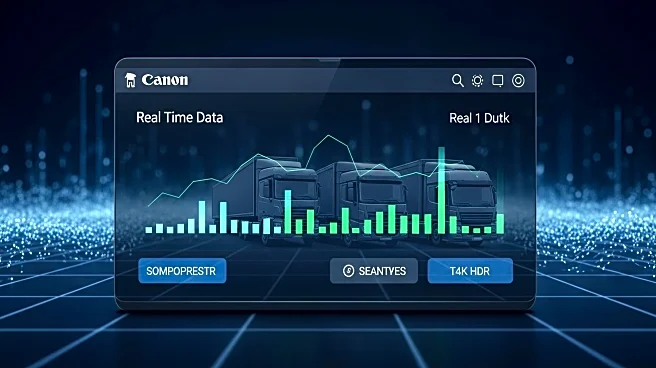What's Happening?
Real-time asset data is transforming logistics operations by providing precise and timely visibility into asset movements. Traditional tracking systems, such as GPS and RFID, often lack the accuracy needed for dynamic decision-making. New technologies, including AI and machine learning, are enhancing asset tracking by correcting GPS inaccuracies and predicting true asset locations. This improved visibility allows logistics operations to optimize labor planning, reduce dwell times, and enhance operational efficiency. The integration of real-time data supports better demand planning and benchmarking across sites, while also contributing to sustainability goals by reducing unnecessary movements and emissions.
Why It's Important?
The adoption of real-time asset data is crucial for logistics operations seeking to improve efficiency and sustainability. By providing accurate location data, these technologies help reduce operational costs, improve throughput, and support corporate sustainability initiatives. Enhanced visibility into asset movements allows for better labor planning, reducing overtime costs and improving worker satisfaction. The ability to make informed decisions based on real-time data is a game-changer for logistics operations, enabling proactive planning and reducing inefficiencies.
What's Next?
Organizations are increasingly deploying AI-powered tools to shift from reactive fixes to proactive planning. The continued integration of real-time asset data into logistics operations is expected to drive significant improvements in efficiency and sustainability. As these technologies become more accessible, logistics operations will be able to optimize their workflows and reduce environmental impact, supporting broader corporate sustainability goals.











